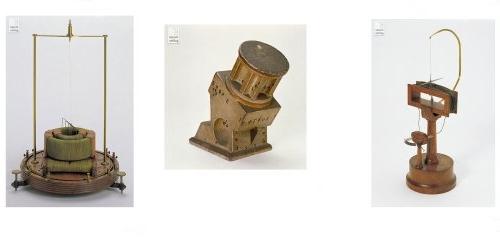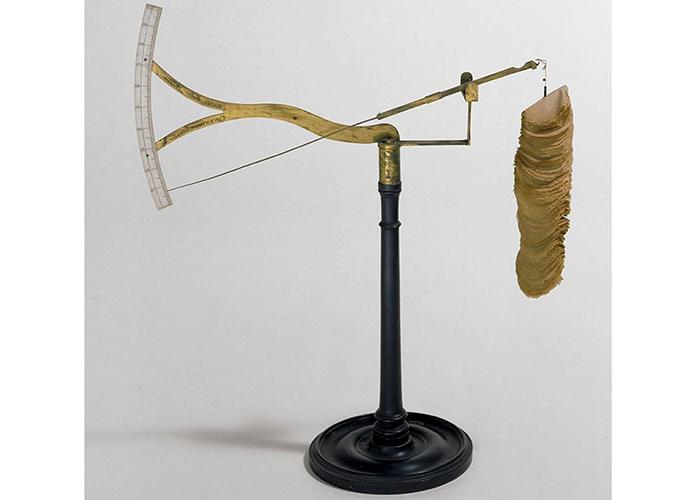艺术遇上科学:教授. 威顿 & Bosch Collaborate on the Galileo Project
- 新闻 & esball官方网
- 新闻
- 艺术遇上科学:教授. 威顿 & Bosch Collaborate on the Galileo Project

图中是三个物体. Are they 科学仪器s or are they art objects?
They’re actually 科学仪器s, albeit antiquated ones. The middle photo is of a 17th-century sundial. The two objects on either side are 19th-century galvanometers that measure electrical currents. All three are part of Richard 威顿’s and Doug Bosch’s latest brainchild – the Galileo Project.
RIC Professor of 艺术 Richard 威顿 was awarded a Make 艺术 Grant by the Rhode Island State Council on the 艺术 to complete this project in collaboration with RIC Professor of 艺术 Doug Bosch.
以伽利略命名, 现代科学之父, the Galileo Project is an exploration of that nebulous region where, “历史, 科学仪器s lose their meaning over time and become art objects, while artists make objects that appear to have a scientific basis,惠顿说。. (See a catalog of amazing mechanical devices 威顿 has created over the years that appear to have a scientific basis: “Wunderkabinett: A Cabinet of Curiousities.”)
在这个项目中, Bosch and 威顿 select six 科学仪器s from a collection of antiquities at the Museo Galileo in Italy. 威顿 will create paintings of the six instruments (sometimes with modifications) and then six instruments of his own invention. Likewise, Bosch will create sculptures of the six instruments and then invent six more of his own. In all, they will generate a total of 24 finished pieces (12 sculptures and 12 paintings).


“I’m inventing small sculptures that directly borrow from the six objects in the museum’s archive,博世说。. “视觉上来说, my sculptures could live alongside the original artifact as a cousin or hybrid, while simultaneously being viewed as an art object.”
Both artists enjoy using science to inform the aesthetics and underpinnings of their work. Their joint project will reflect how a painter and sculptor interpret the same data differently.
威顿 的地方s particular emphasis on China’s influence on European 科学仪器s.
“I’m convinced that ideas were transmitted through trade routes between China, 意大利和荷兰,他说. “The objects I create will be a statement on how much European scientific history depends on objects and ideas obtained from China.”

The first exhibition of the Galileo Project is scheduled for October 2025. A catalog of the objects will be written by RIC Professor of 艺术 Natasha Seaman, with graphic design by RIC Professor of 艺术 Nancy Bockbrader. The project will be co-curated by Victoria Gao, director of Bannister Gallery.
看到 艺术系 for information about our program.
